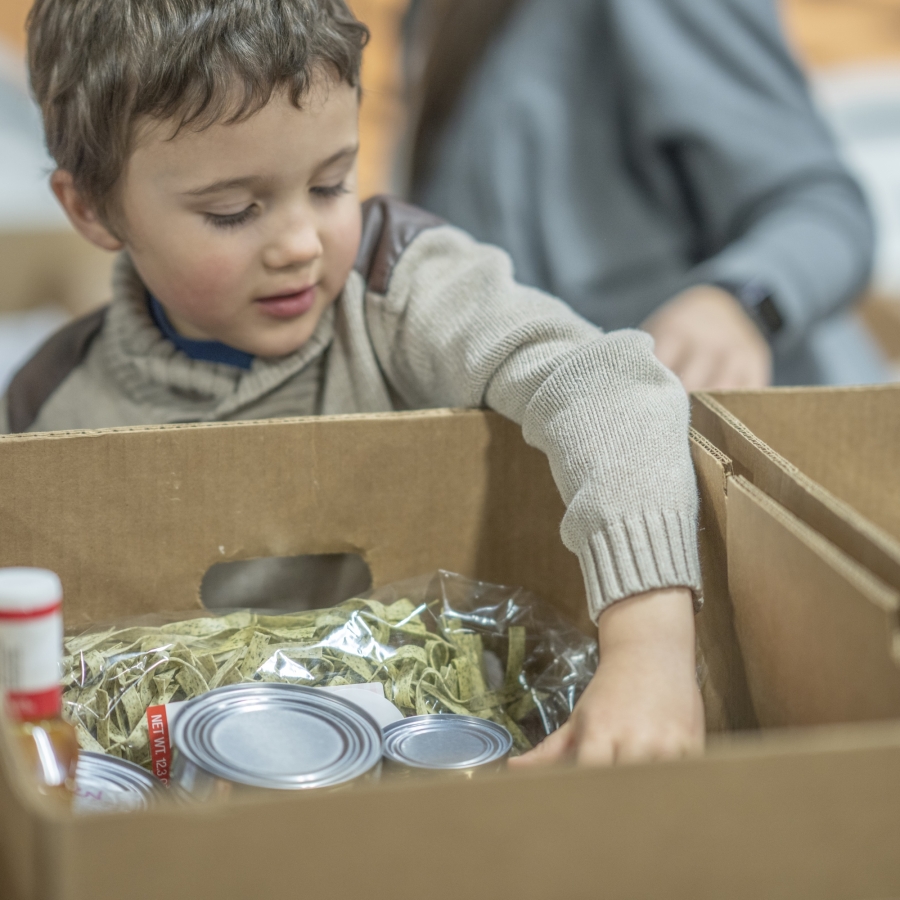
Food Pantries and Hot Meals
The charitable food system, or the emergency food system, aids families in need through food pantries and other local organizations to provide free or low-cost food to individuals and families. In 2022, 49 million Americans accessed food through the charitable food system.
Food is donated by individuals, businesses, farmers, and others, with charitable organizations sometimes also purchasing food using donations they receive to maintain sufficient amounts of food. Additionally, Federal programs including the Emergency Food Assistance Program and the Commodity Supplemental Food Program provide commodity foods to charitable organizations.
While it is difficult to estimate how many organizations provide free food and meals to Michiganders, 4,653 hunger-relief agencies throughout Michigan distributed almost 230,000,000 pounds of food to families during the height of COVID-19. Additionally, we know that charitable food resources in Michigan are much more concentrated in our urban and suburban areas. In many rural communities, families rely on mobile food pantries that partner with local organizations to bring free food and groceries to the area.
Charitable Food System Participation Among Feeding MI Families Participants
Participation in the charitable food system can be seen in figure below, with 63% of parents responding they have received free food or hot meals from organizations, with differences and similarities by location, race/ ethnicity, US nativity, family disability status, and safe housing status.
What We Learned
Satisfaction rates for the charitable food system can be seen in the following figures. When asked how free food or hot meals from community organizations could be improved, parents most commonly responded that they would like to see increased food quality and safety. Parents also desired an increase in the quantity and varieties of food offered.
Recommendations
Stigma and Discrimination are Central Barriers to Food Security
- Many families feel that using a food pantry or hot food program is a last resort, they feel ashamed of having no other choice but to use them and don’t want their children to be aware that they are using the charitable food system. Reducing the stigma of needing charitable food and improving the environment of food pantries/food distribution sites should be a priority to ensure that families who need food feel comfortable accessing it.
- Clear communication about days and hours open, ensuring generous and empathetic staff and volunteers, and allowing food choice are all strategies that parents reported made them feel more comfortable using the charitable food system.
Small Modifications Make Big Differences to Families
- Organizing foods offered to be able to make a complete meal and assisting families via providing recipes, no-cook options, etc. can greatly improve parents’ experiences.
- Many programs are open for limited hours during the traditional work week. Prioritizing flexibility of operating days and hours will increase access and reduce stress on families.
- Many families need to be able to access charitable food more than once a week or more than once a month. Whenever possible, programs should re-evaluate their policies and consider whether restrictions such as these are necessary for effective operation.
- Allowing families a choice of food types and portion sizes can increase program satisfaction and decrease food waste.
Families Want Dignified Access to Fresh and Safe Produce, Proteins, and Dairy Products
- Many parents with family members with food allergies or other medical dietary needs found food pantries and hot food programs to be inaccessible, leading them to have to spend more of their budget on food from grocery stores. Food banks and pantries can place a higher priority on providing foods safe for individuals with allergies, gluten intolerance, diabetes, etc.
- Offering near-date, expired, or spoiled food makes many families feel less than and is perceived as a form of discrimination. Education about “best by” dates may help some families feel more comfortable using these foods, but other families will perceive these efforts as pressure to eat food that is not safe and/or has been cast off by others.

